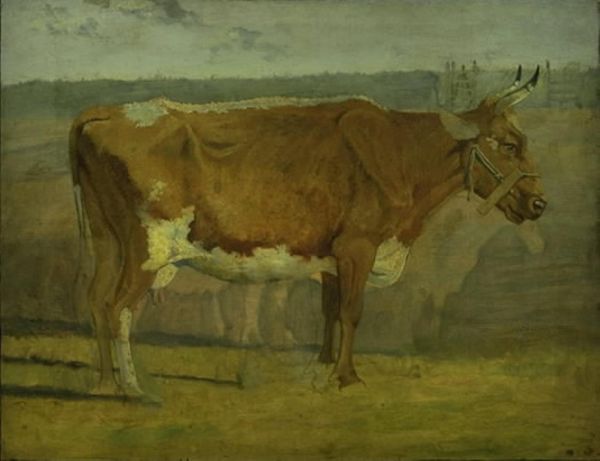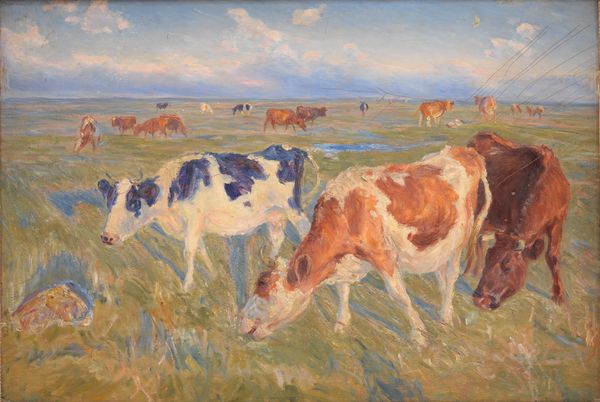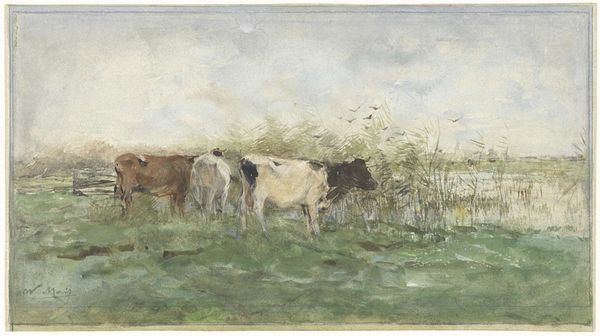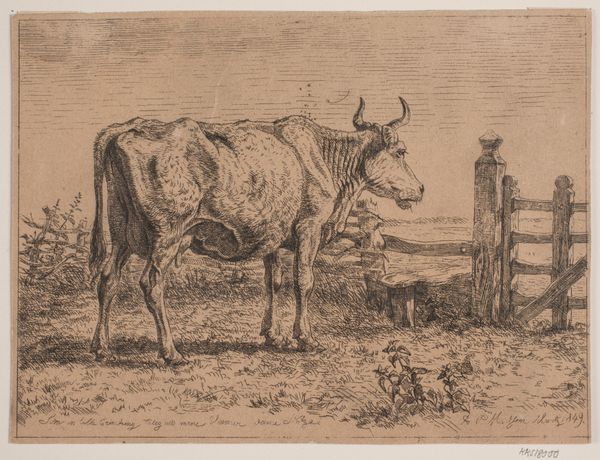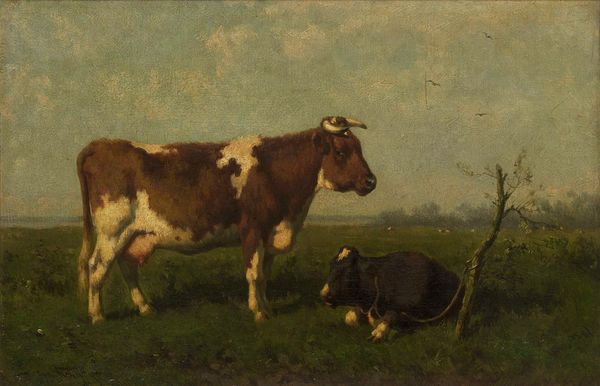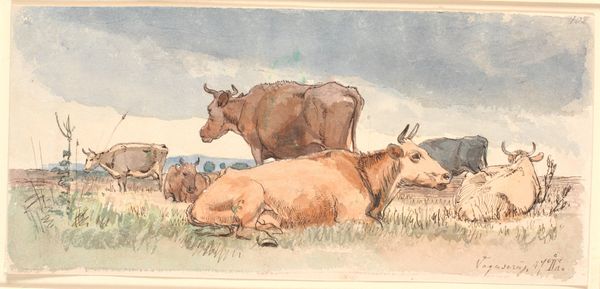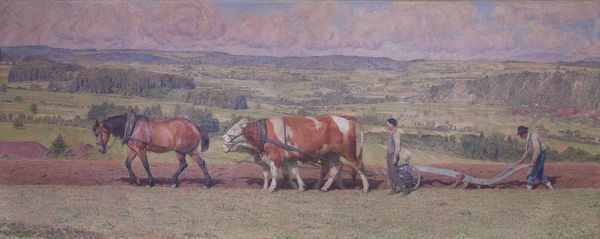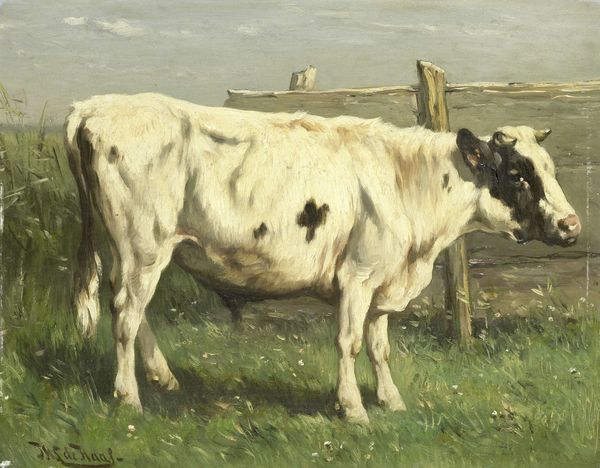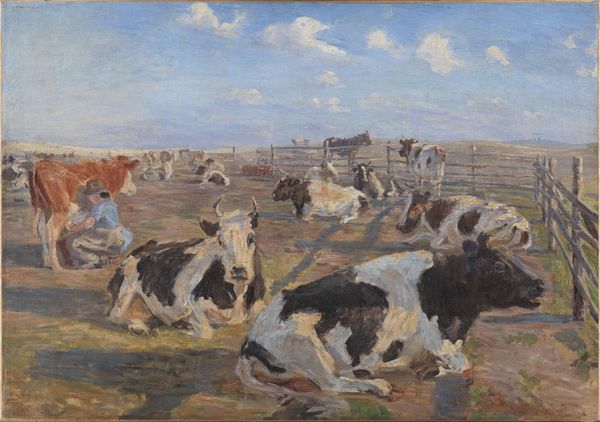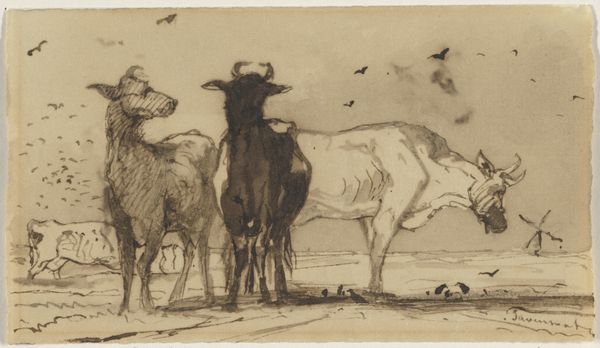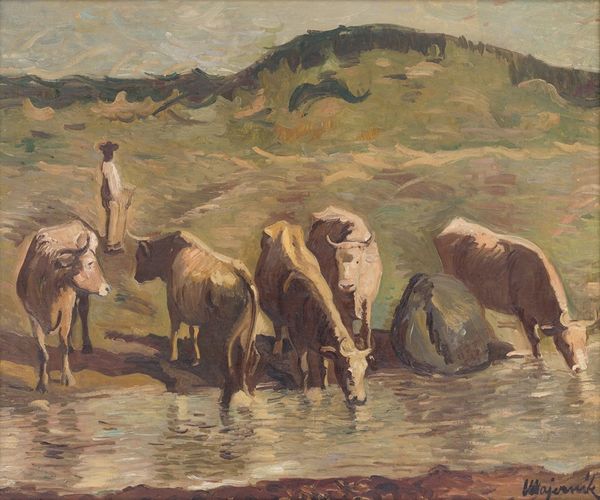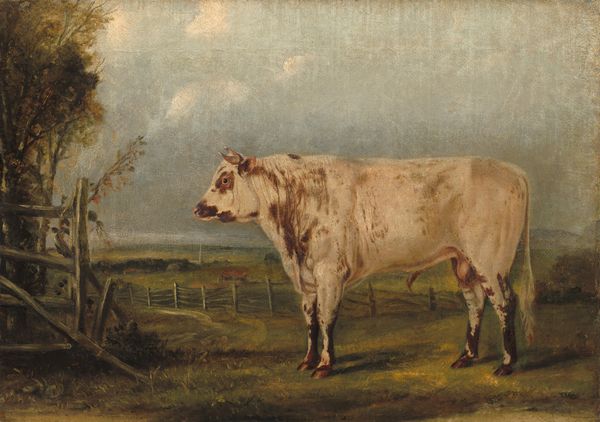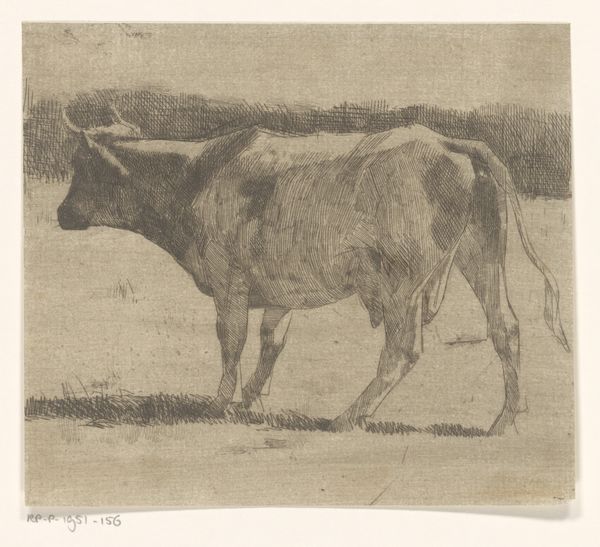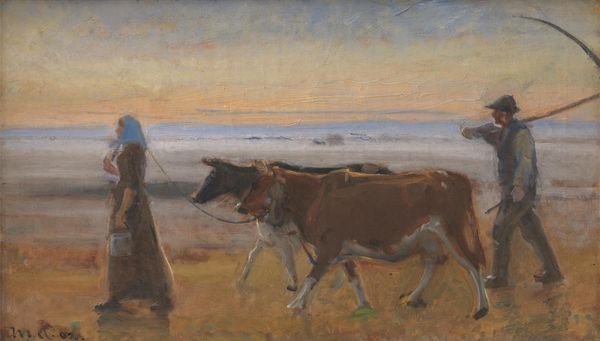
Dimensions: 38.5 x 45 cm
Copyright: Public domain
Curator: Let's take a moment to consider Ferdinand Hodler's "The Bull," painted in 1878. It offers an intriguing example of the artist’s early realism period. Editor: I like it! He seems like a gentle giant, doesn't he? But a bit lonely, off on the right side like that. Curator: The bull's isolation can be read in many ways. Consider the context of late 19th-century Switzerland. Hodler's paintings often grapple with themes of national identity and the changing roles of rural communities in an industrializing society. Editor: Ah, so maybe the bull is Switzerland, sturdy but stuck? Or is it supposed to be the changing landscape he's stuck in? Kind of melancholic, that horizon line isn't it? It doesn't go anywhere. Curator: Precisely. He seems to be drawing attention to this magnificent creature and questioning its place in the landscape. I would argue it might also allude to anxieties around masculinity at that time as society moved beyond traditional pastoral ideals. Editor: Maybe he's just cold. Looks windy on that little hill in the background. Curator: Yes, one cannot ignore the artist’s plein-air style, a notable attribute visible with its subtle layering and earthy color scheme; we get a sense of the cold wind. I think the subdued tones evoke the quiet struggles embedded in rural life and labor. Editor: It does invite quiet reflection, though, doesn’t it? Like he's thinking things through, trying to come to terms with a reality he maybe doesn't entirely love. A bit like me with my taxes! Curator: The painting encourages us to reflect not only on what the bull signifies but what it felt like to live and survive alongside nature, an experience increasingly estranged with time. Editor: Right. I bet this painting kicked off some good conversations when it came out. It definitely just kicked off one with me! I’m off to find a meadow. Thanks, Ferdinand, and thank you!
Comments
No comments
Be the first to comment and join the conversation on the ultimate creative platform.
